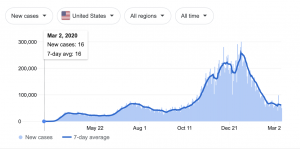In this weeks readings and podcast, my biggest takeaway was that everyone contributes to any kind of difference made. For instance, in the podcast, Dr. Bezio tells us that our job as leadership scholars is to realize that the people on the podium are only the tip of the iceberg. It is not only their job to take action.
One quote that stuck out to me in the reading was, “the problem is not that we have so little power. The problem is that we don’t use the power that we have.” From this, I took away the fact that people assume that any effort they do to make change is so little and won’t add up to anything. In reality, we need smaller actions to impact or create a larger one. In regard to that, we cannot stand by and expect the “tip of the iceberg” leaders to do all the work. If we do, the whole system could come crashing down on us, because one person is not enough to hold together an entire system.
I also liked the quote, “The future Is an infinite succession of presents and to live now as we think human beings should.” I think this is important for people to understand. We must set the example that we want to see in the world. We cannot just stand by, think we have no power and think that someone higher up will do something. Our opinions and actions matter. They are what will build up to a larger action or change.

